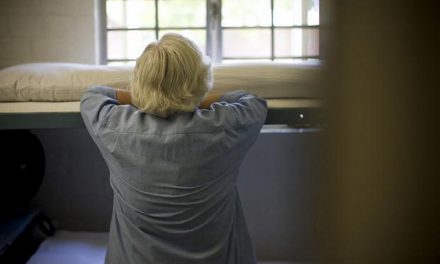The topic of rape made headlines when a 2014 Time Magazine cover story focused on sexual assaults on college campuses. Afterward, numerous broadcast outlets followed suit. These stats were among the ones making headlines:
- College freshman and sophomore women are at greater risk to be raped than upperclassmen. About 84 percent of women who reported sexual coercion experienced the incident during their first four semesters on campus.
- Students living in sorority houses and on-campus dormitories are respectively three times and 1.4 times more likely to be raped than students living off campus.
- At least 50 percent of college sexual assaults are associated with alcohol use.
- Thirty percent of college women who said they had been raped contemplated suicide after the incident.
“Rape is a four-letter word that no one wants to talk about,” said COVERSA Clinical Services Director Carolyn Cordle, RN, BSN, SANE-A. “With that being said, it’s hard for funders and donors to give.”
COVERSA, which stands for Collection of Victim Evidence Regarding Sexual Assault, is looking to change that. The 501(c)(3), Kansas City-based nonprofit works to improve forensic evidence collection used in a court of law, provide acute intervention services, and collaborate with sexual assault advocates.
COVERSA has been providing services to victims of sexual assault for the past 13 years. In the last three years, they’ve been able to expand services to 14 different hospitals in the Kansas City area, which allows them to treat people from up to 26 different counties. They’re very proud of that fact.
COVERSA also provides training for nurses to become sexual assault nurse examiners (SANEs) and conducts community outreach and education.
Before COVERSA, a victim’s only option to receive treatment and guidance was to go to an emergency room. In some instances, this meant enduring congested waiting rooms and medical staff who did not have the training needed to deal with the emotional intricacies of a sexual assault victim. Consequently, many opted out of the exam and the perpetrator never saw a day in court.
SANEs are available around the clock to provide medical forensic exams to rape victims. They document and treat injuries and refer patients to the emergency department if an injury is beyond their realm of practice. Additionally, they provide treatment for sexually transmitted infections and protection against unwanted pregnancies. Victims are also connected with area advocacy groups to help see them through the recovery process.
The role of a SANE is to remain objective throughout the process, collect forensic evidence and protect the chain of custody. In order to do this type of exam, an expert witness cannot show support for the victim; instead it’s imperative to be supportive of the science of forensics.
But the process isn’t simple. Because forensics is crucial to trying rape cases, after an assault, victims should not wash, bathe, drink, smoke or do anything that could hinder evidence collection. They must provide a complete medical history and specific details of the assault. Answering explicit questions about what happened can be very uncomfortable. But SANEs need to ask those questions because they need to go to those intimate areas to try and recover evidence. This process can be very long. Victims vary from very emotional to very stoic. There’s not a standard emotional response for this kind of assault.
More community education about rape and sexual assault produces more informed jurors. Cordle said jurors need to understand that victims often know their perpetrators. In most cases, it’s not the person who jumps out from behind the bushes and grabs you as you walk down the street. It’s somebody you know: your neighbor, somebody who lives in your apartment complex, somebody who works in your office. That’s the reality of it.
Because the perpetrator may not be a stranger, it makes it harder to prosecute rape cases. In the eyes of a juror, it may become a “he said, she said” situation —not an actual assault. Alcohol fosters other misconceptions. “Just because a person drinks,” Cordle said, “that doesn’t give anyone a right to take advantage of that person. People just don’t play hard to get.”
According to the U.S. Department of Justice, only two percent of sexual assault accusations reported to the police turn out to be false. Also, rape is not just a female problem. “We have seen a dramatic increase in male assaults in the last few years,” she said. “If someone says no, it simply means no.”
As for what and who to watch out for, rapists are usually serial predators who don’t commit just one sexual assault and quit. They develop their own style of how they approach a person, and they tend to prey on people who don’t have much self-esteem. Other targets are younger children, older adults, and people who live in skilled nursing centers, or individuals who are mentally impaired. Victims who know their rapists are generally less likely to have obvious injuries. Unfortunately, juries may think a victim should have just that – another factor that makes prosecuting these cases difficult.
Multiple studies conclude perpetrators commit up to 400 cases of rape before they are ever sent to prison. Getting rape victims to come forth is another challenge. Some are afraid of the negative media attention; some don’t feel they can withstand a jury trial. Not everyone who is sexually assaulted necessarily wants to go to trial. That’s something that needs to be considered as rape victims go through subsequent counseling with the different agencies.
However, some victims are willing to go to trial – like in this case that happened in the Kansas City area:
Two married couples with children who played together lived in the same neighborhood. One of the couples hosted a Halloween party for the adults. One of the married women had consumed a little bit of alcohol but seemed tipsier than normal. She went to the bathroom only to find her neighbor’s husband shadowing close behind. The woman said she felt uncomfortable about the situation and found herself moving in and out of consciousness throughout the ordeal.
After the perpetrator left the bathroom, the woman went to look for her husband, who she found downstairs sick and not feeling well. The next morning, she felt even more uncomfortable about what happened and went to a hospital where she was examined by a forensic nurse. Evidence was collected, including the dress she wore at the party.
She went to talk with a detective about the incident and he assumed she was simply trying to cover up an affair. She then spoke with a legislator she knew who helped her get in contact with the area’s main prosecutor, who took the case. Only one juror understood how something like this could happen – that even though she and her husband were friends with this couple, something like this was still possible.
Ultimately, that juror was able to convince the other jurors to find the perpetrator guilty. He received a mild sentence and moved his family to Texas, where he later molested a child.“Friends” can certainly perpetrate a crime. These types of perpetrators out there, and jurors need to understand that.
Cordle said that rape is the only crime in which the victim has to prove their innocence, while the perpetrator can plead that everything was consensual. “Victims have to be diligent throughout this whole process,” she said. “I’m disappointed that not everyone starts by believing the victim.”
As for COVERSA’s sexual assault outreach sites, they continue to help hospitals improve services in their communities. “We have learned that if you build it, they will come,” Cordle said. “With every hospital expansion, we have exceeded the expected numbers by large margins. We have learned that bringing our services to victims allow them to be served better.” To report a rape, call COVERSA’s 24/7 Access CareLine at 1.855.717.1136.








